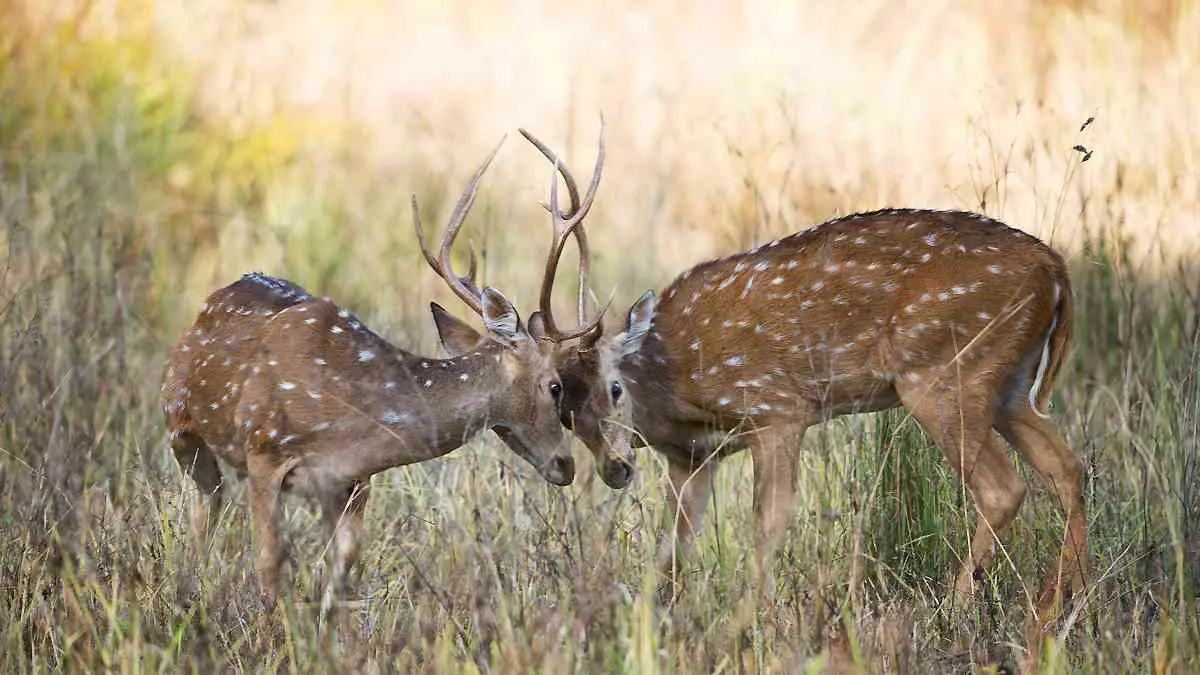The chronic wasting complaint, frequently ominously appertained to as “zombie deer complaint,” has been making captions lately. The name itself conjures images of a horror movie, but the reality is just as concerning.The complaint has reached intimidating proportions, with 414 counties in 31 countries reporting its presence in free-ranging deer populations.
What’s Zombie Deer Disease?
Chronic wasting complaint (CWD) has earned its creepy surname due to the neurological symptoms it induces in affected deer, similar to weight loss, lack of collaboration, listlessness, and, indeed, Drooling. These signs act as the stereotypical depiction of zombies in popular culture.
CWD has spread its grip across the United States, affecting at least 31 countries. Recent reports from Kentucky verified a case of CWD in a white-tagged deer.
The chronic wasting complaint isn’t confined to the United States; it has entered three Canadian businesses. Also, outside of North America, cases of CWD have been reported in reindeer and moose in Norway, Finland, Sweden, and South Korea.
How Does CWD Spread?
Understanding how CWD spreads is pivotal in assessing its implicit trouble to humans. The complaint can have a lengthy incubation period, occasionally lasting over a time. Scientists believe it applies through:
1. Contact with defiled Body Fluids and Towels. Infected deer exfoliate prions, and misfolded proteins are responsible for the complaint through spit, urine, and feces. These prions can persist in the terrain for an extended period, making it easy for other deer to come into contact with them.
2. Environmental Factors CWD can also spread through the terrain, including defiled drinking water and food sources.
Can Zombie Deer Disease Affect Humans?
While there have been no verified cases of CWD transmission to humans, some scientists are sounding the alarm bells. Dr. Cory Anderson, a program director at the Centre for Infectious Disease Research and Policy, parallels Britain’s frenetic cow complaint outbreak, which demonstrated how a complaint could jump from beast to human putatively overnight. Anderson emphasizes the significance of preparedness, stating, “No bon is saying that it’s undoubtedly going to be, but people need to be prepared.”
Why Prepare for Academic Trouble?
It’s essential to address some critical points about CWD
• There are no verified cases of CWD transmission to humans presently. Scientific substantiation doesn’t support its spread to humans through venison consumption.
• Avoiding gratuitous Anxiety fastening on academic mortal symptoms can lead to gratuitous Anxiety and alarm. Creating a symptom table could fuel enterprise and fear regarding a missing health problem without verified cases.
• By counting on accurate information instead of assuming about mortal symptoms, we should prioritize trusted sources like the Centres for Disease Control and Prevention (CDC) and other public health agencies for believable CWD information.
Trusting the Experts
When understanding and addressing the pitfalls associated with chronic wasting complaints, it’s vital to trust the experts and calculate accurate, vindicated information. There are some coffers you can turn to
• The Centres for Disease Control and Prevention (CDC) Provides up-to-date information on CWD, including its origins, transmission pitfalls, and recommendations for handling potentially infected creatures.
• Your Original Health Department Can offer indigenous guidance and answer specific questions you might have about CWD in your area.
• Reputable Wildlife and Conservation Organizations Offer perceptivity into CWD’s impact on beast populations and exploration sweats to understand the complaint more.
Why “Zombie Deer Disease”?
The moniker” zombie deer complaint” may feel sensational, but it has its reasons. Neurological Symptoms Infected deer parade a loss of collaboration, balance, and fear.
1. They may stumble and appear disoriented, suggesting the stereotypical zombie gait. Also, they come wasted, presenting the haggard appearance frequently associated with zombies.
2. inordinate Drooling Some infected deer indeed parade inordinate Drooling or raging at the mouth, a particularity generally attributed to zombies.
3. Disease Transmission CWD is caused by prions, misfolded proteins that can fluently spread to other deer through fleshly fluids. These prions are notoriously challenging to exclude from the terrain, potentially allowing for long-term impurity, much like the grim spread of zombies in fabrication.
4. Uncertain Long-Term Goods Although CWD isn’t presently transmittable to humans, the lack of complete understanding about the complaint and its implicit mutation adds an element of fear and query, feeding into the “unknown trouble” aspect of zombie narratives.
It’s still pivotal to distinguish between the fictional trouble of zombies and the real but manageable threat posed by Chronic wasting’s complaint. Public health officers recommend proper running of deer carcasses and avoiding meat consumption from creatures suspected of having CWD to minimize any implicit mortal health pitfalls.
The significance of Alert In a world where unanticipated challenges feel to crop regularly, staying watchful and set is a core principle of responsible governance and individual well-being. Chronic wasting complaint, though not an immediate trouble to humans, teaches us an essential assignment in preparedness. History is replete with exemplifications of conditions that began in creatures and crossed over to humans. The forenamed frenetic cow complaint, or bovine spongiform encephalopathy (BSE), is one similar illustration.

It caused significant fear and health enterprises when it made the vault from cattle to humans. Also, COVID-19, which probably began in batons, showed how a new contagion could snappily become a global epidemic. While CWD isn’t a contagion, its implicit transmission to humans underscores the significance of Alert.
Preparing for the changeable
Being prepared does not mean succumbing to fear or paranoia. It means espousing a visionary approach to minimize implicit pitfalls and maximize our capability to respond effectively. Then are some crucial ways in which we can prepare for the uncertain
1. Scientific Research Continued exploration into CWD is essential. Scientists need to understand the complaint more, including its transmission mechanisms and any eventuality for mutation.
2. Monitoring and Surveillance Governments and wildlife associations must continue covering deer populations for signs of CWD. Beforehand discovery can help further spread.
3. Communication Public health agencies should maintain open communication channels to inform the public about any developments regarding CWD and its implicit pitfalls.
4. Regulation Responsible stalking practices, including proper corpse disposal and testing of gathered deer, can reduce the threat of CWD transmission.
5. Public Education Educating the public about the complaint, its pitfalls, and preventives is pivotal. Knowledge empowers individuals to make informed opinions.
The Mortal-Beast Connection Chronic wasting complaint highlights the interconnectedness of mortal and beast health. As we worm upon wildlife territories, engage in stalking, and consume wild game, we must be aware of the implicit consequences.
Responsible wildlife operation involves balancing species conservation with the well-being of ecosystems and public health. As we defy challenges like CWD, ethical considerations come into play. Finding humane, wisdom-grounded results that cover wildlife and mortal interests is essential.
Dealing with pitfalls like CWD requires collaborative trouble. Governments, scientists, nimrods, and the general public all have places to play. Cooperation and participated responsibility can minimize the pitfalls associated with conditions like CWD and ensure the long-term health of both beast populations and our own.
Chronic wasting, or “zombie deer complaint,” is a slow-moving disaster that formerly affected multitudinous deer populations across North America and beyond. While there have been no verified transmission cases to humans, scientists emphasize the significance of preparedness and caution.
Calculate on believable sources like the CDC, your original health department, and estimable wildlife associations to stay informed and safe. Understanding the complaint and its pitfalls is pivotal to ensuring we’re set for any implicit unborn developments. In this “slow-moving disaster,” it’s better to be informed and watchful rather than caught unrehearsed.






















+ There are no comments
Add yours